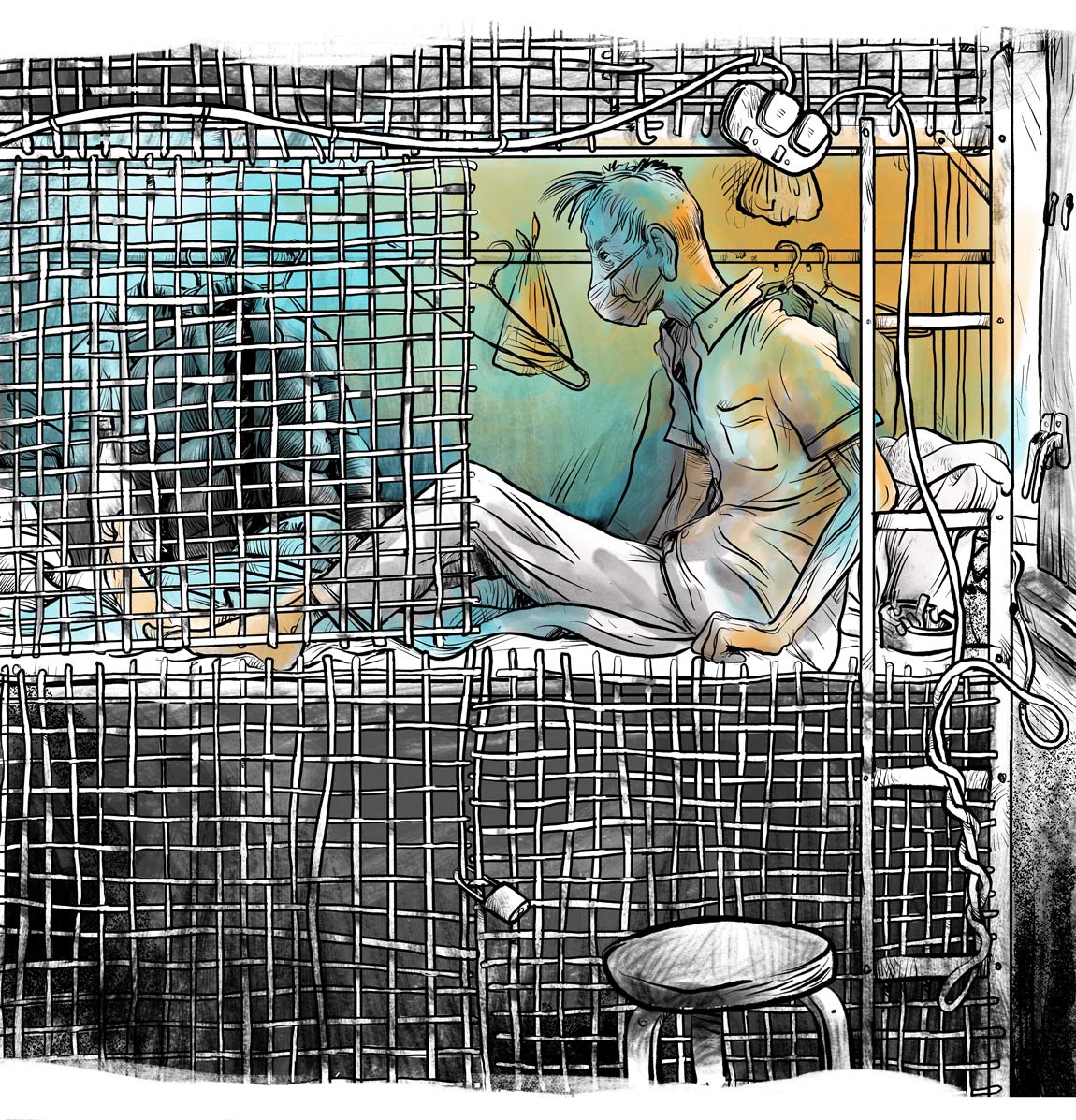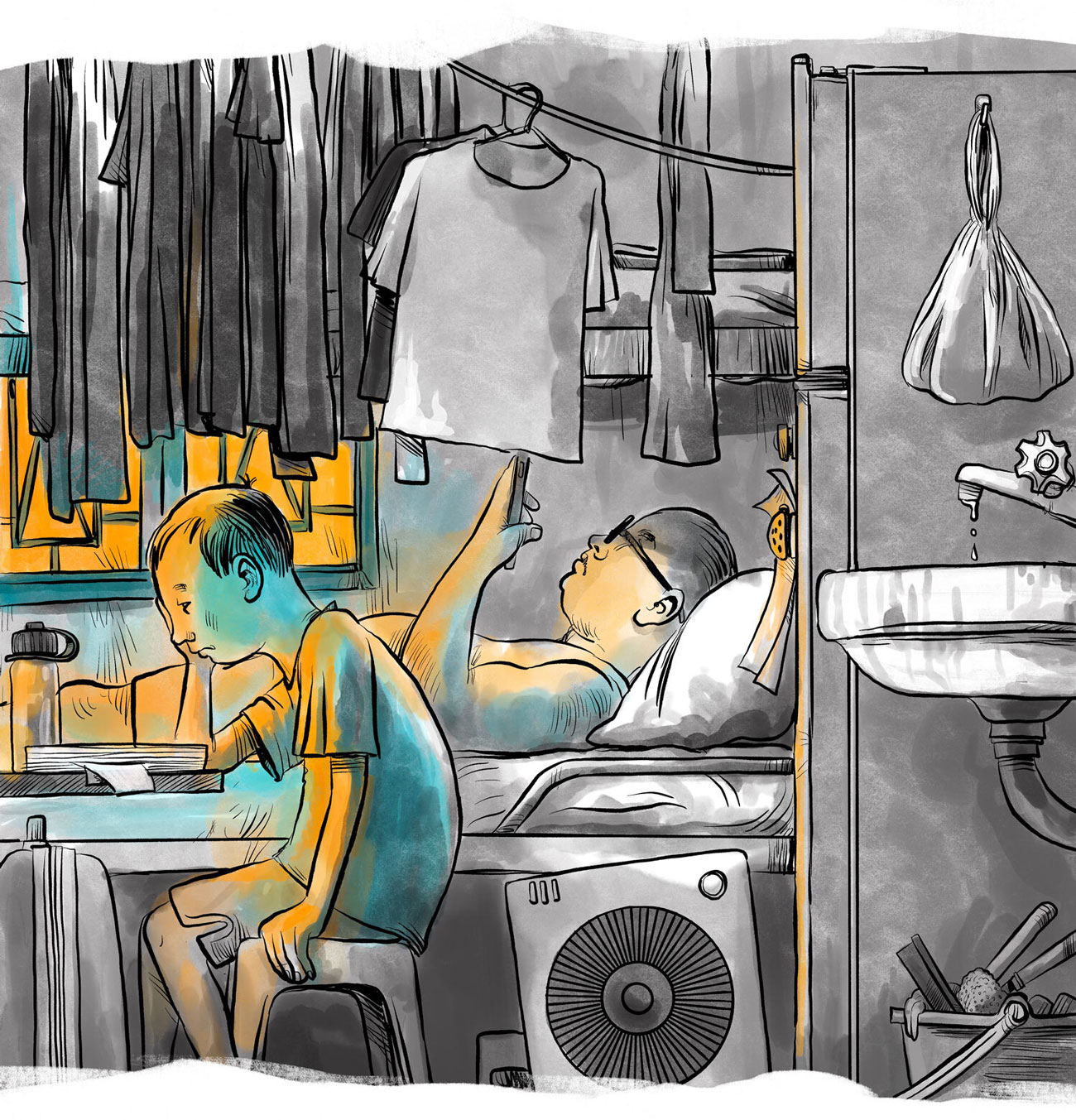
Life in Hong Kong’s shoebox housing
Behind Hong Kong’s glittery facade is a poor underbelly where more than 220,000 people live in cramped subdivided flats, bed spaces and cage homes.
Hong Kong, a bustling city of nearly 7.5 million, is famous for its expensive property market, considered the least affordable in the world. For some 220,000 people, home is in the city’s more than 110,000 subdivided units. These shoebox dwellings — units created out of existing flats, usually in old tenement buildings - are well known for their poor, cramped conditions.
Plenty of land, but not for housing
For many years, Hong Kong’s housing crisis has been put down to a shortage of land, sparking a debate over sites that can be freed up for homes and the land reserves amassed by the city’s major developers. About 25 per cent of Hong Kong’s total land area of 1,110 square kilometres (430 square miles) has been developed. The remaining areas are in a relatively natural state, most of them country parks or protected areas.
Long wait for public rental housing
With an average waiting time of 6.1 years for public rental housing, many of Hong Kong’s working poor have little option but to live in subdivided units while they wait. Beijing has repeatedly called Hong Kong’s housing shortage a deep-seated problem that must be addressed. In 2021, Xia Baolong, Beijing’s top official overseeing the city’s affairs, set a target to rid the city of subdivided units by 2049.
0 of them had waited for 3 years or less
0 of them had waited for 3 to 4 years
0 of them had waited for 4 to 5 years
0 of them had waited for 5 to 6 years
0 of them had waited for more than 6 years
Survey on subdivided units
In March 2021, Hong Kong’s Transport and Housing Bureau released a report on the city’s subdivided units. Here are some findings:
Each square equals 1 per cent of Hong Kong subdivided flat residents
Rise of the nano flats
Hong Kong developers are building smaller flats as property prices continue to soar. These so-called nano flats - about 260 sq ft in size - are branded as an affordable option even though they typically sell for millions. More than 8,500 of them have been built over the last decade. They are luxury compared with the city’s grittier subdivided units, and usually feature a kitchenette and tiny bedroom. About 70 per cent of nano flats come with a windowless bathroom.
Types of subdivided units
Subdivided dwellings are mostly in run-down old buildings that are privately owned by individuals or companies, but they are not Hong Kong’s smallest. Those would be the city’s single-occupant bed spaces and cage homes.
More than 60 per cent of subdivided units are in Kowloon, about 24 per cent are in the New Territories, and the rest are on Hong Kong Island. Households tend to be small, averaging two people. The majority of units, some 82 per cent, are in buildings that are 50 years or older. Almost all have a toilet or two, and some sort of kitchen space, whether shared or independent. Some lack windows.
Loft spaces, space capsules, rooftop houses and podium houses are also classed as subdivisions.
Number of subdivided units by type, as of 2020

Cage homes
Cage homes have been around in Hong Kong for many decades. These wire cage-like compartments, just large enough for a person to lie down, are typically stacked in pairs, top and bottom. Some units house more than a dozen of these cages, with a single bathroom and a shared kitchen area. Residents say the experience can be hellish in crowded, unhygienic, poorly ventilated rooms, particularly in summer.
Bed spaces
Bed spaces, like cage homes, are self-contained boxes that are not much bigger than a ping-pong table - enough for a mattress, a person and their belongings. They look like wooden pods, hence their “coffin cubicle” moniker. A lockable door offers some privacy from other residents sharing common areas. The general lack of privacy is just the start of the struggle. Residents complain of paying up to HK$3,000 a month (US$382) to live in sometimes inhumane conditions that take a toll on their mental health.
Closet homes
Many units are closet-sized, as small as 37.6 sq ft. They are built in larger rooms with communal bathrooms and kitchens. These subdivided units are often stacked with personal belongings - so crowded that occupants sometimes don’t have enough room to fully extend their arms.

Regular subdivded units
The most typical subdivided units for Hong Kong’s low-income households come with a private toilet and tiny kitchen. Many households spend at least half of their salary on rent. A survey, which was conducted by Chinese University researchers and the Concerning Grassroots’ Housing Rights Alliance in 2021, found these units had an average size of only 121 sq ft with a monthly rent of HK$5,000 (US$642).
Smaller than a prison cell
Some of the city’s poorest residents are living like prisoners. A 2017 survey by the Kwai Chung Subdivided Flat Residents Alliance found the average living space per person was only 50 sq ft – roughly the size of three toilet cubicles or half the size of a standard parking space. Prisoners in shared dormitories have an average space of 49.5 sq ft per person, while maximum security prisoners typically get 75 sq ft of living space.
‘Like a caged animal’: why Hongkongers in city’s notorious subdivided flats say they have no choice ‘This is not a home’: depression, cockroaches, rats and shame add up to misery for Hongkongers in subdivided flats Can Hong Kong deliver on 2049 target to wipe out subdivided flats and ‘cage homes’? Resident says ‘I will probably die in one of them’
Edited by Andrew London, Fiona Sun and John Henderson
Source: Hong Kong Transport and Housing Bureau; Hong Kong Housing Authority; Kwai Chung Subdivided Flat Residents Alliance; Hong Kong Economic Times